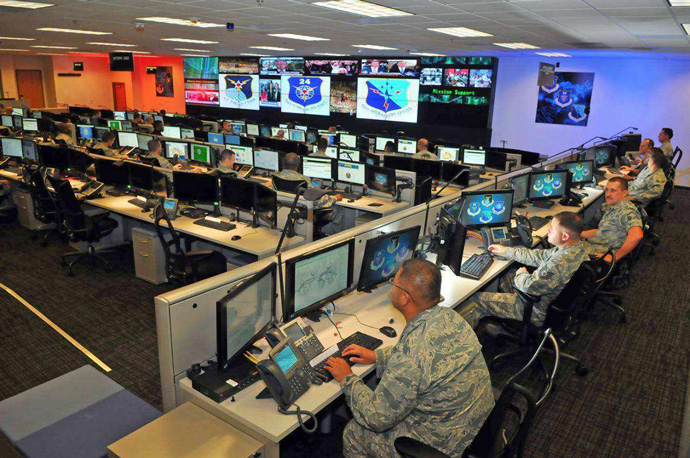
Attacks are constant on the network and are growing in frequency and intensity. They can destroy physical structures and operational systems, paralyze cities and generate millions in losses, even costing lives. But the instruments of all this chaos is not bombs, bullets or tanks, rather they are by bits and bytes.
Cyber warfare has been used to terrorize individual companies and entire governments. Civilians are denied basic services like electricity and heat. Most disturbingly, cyber warfare appears to be evolving in the hands of countries like Iran, North Korea, and Russia as new disruptive and destructive cyberattack techniques advance. The threat of cyberwar looms over the future, so let’s see what it consists of here.
What is Cyberwar?
Cyberwar refers to the use of digital attacks, such as computer viruses and computer hacking, by one country to disrupt the vital computer systems of another, with the aim of creating damage, death and destruction. Future wars will see hackers using computer code to attack an enemy’s infrastructure, fighting alongside troops with conventional weapons. In a bleak world that is still full of spies, hackers, and top-secret digital weapons projects, cyber warfare is an increasingly common and dangerous feature of international conflicts.
This is how William J. Lynn III, the United States Undersecretary of Defense, cataloged it a few days ago when he presented the first Strategy to Operate in Cyberspace, a program with a view to protecting the nation from a potential and devastating attack on the Internet against its critical infrastructure, key systems and other physical and electronic interests. For the Department of Defense (Pentagon), cyberspace is a field of operations equals to land, sea, air or space and, therefore, equally subject to being the scene of defensive maneuvers and, if necessary, preventive attacks and reprisals.
The enormous dependence of Western societies on computer and electronic systems is making them more vulnerable to potential cyberattacks. Furthermore, in such a hyper-connected world, an impact in the heart of the information and technology networks could generate millions in losses to any country or institution, not to mention the strong psychological consequences that an attack of these characteristics could cause. Hence, numerous countries are developing tools to attack the government systems of other states while trying to strengthen their security measures. But not only the States have discovered the advantages that the network provides them, but also the terrorist groups are doing it. And it is precisely on these points that we have focused our entire article, that is, to find out what uses each is making based on a defensive and offensive strategy.
Source: http://www.pensamientopenal.com.ar/system/files/2016/02/doctrina42952.pdf
Passive Internet Use by Terrorist Groups
The passive use of the internet by terrorist groups are mainly using the Internet to finance themselves, recruit new members, train the members of the different cells, communicate, coordinate and carry out actions, find information, ideologically indoctrinate, promote their organizations and develop a psychological war against the enemy (Cohen, 2002; and Weimann, 2004a). Funding Terrorist groups are using the network, like other organizations, to finance themselves, that is, as a means of raising funds for the cause. For this reason, the terrorists are using their web pages to solicit donations from their supporters. For example, the IRA website contained a page where visitors could make donations with their credit cards, Hamas has raised money through the website of a Texas-based charity, the Holy Land Foundation for Aid, Chechen terrorists have released the number of bank accounts online.
Psychological warfare
They are also using cyberspace to wage so-called “psychological warfare.” There are countless examples of how they use this uncensored medium to spread misleading information, threaten or disseminate images of their attacks. they use to offer their services. In the first place, because just as “commercial headquarters track visitors to their website to create consumer profiles, terrorist organizations gather information about users who browse their headquarters. Then they contact those who seem most interested in the organization or more appropriate to work in it.
INTERNET: A tool for Wars in the 21st Century
Second, because terrorist groups have web pages that explain how to serve Jihad. Third, because those in charge of recruiting members often go to Internet cafés and chat rooms to find young people who want to join the cause. And fourthly, the network opens the possibility for many to offer themselves to terrorist organizations on their own initiative. Although it is true that in the vast majority of cases, recruitment occurs through ties of friendship and personal treatment.
Through the network, terrorist and cyber leaders are able to maintain relationships with members of the organization or another without having to physically meet, so much so that messages via email have become the main communication tool between the factions that are scattered all over the world. However, it should be mentioned that terrorist groups use very different techniques to avoid interception of their messages.
But they can also post messages on the private corporate server of a predetermined company for operators / receivers to retrieve and then delete the communication without leaving any trace; or manipulate electronic pages of private companies or international organizations to create attached files with propaganda; or hide data or images on a website with pornographic content. For this reason, it is important to have the necessary tools to avoid cyber warfare in the network and thus be able to be protected.
Source: https://dialnet.unirioja.es/descarga/articulo/5183751.pdf




